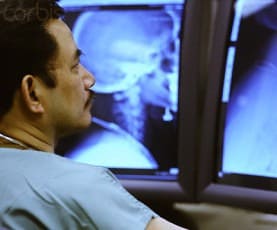Humanoid robot-based distraction therapy during IV cannulation

“Humanoid robot-based distraction therapy is associated with a modest positive impact on child distress for pediatric intravenous insertion” Ali et al (2021).
Safety of remote parenteral nutrition prescribing during a pandemic – Full Text

“Our study demonstrates that minimal contact with effective multidisciplinary communication using the modified workflow can allow for safe and timely PN administration” Salazar et al (2021).
Reducing infection risks when accessing vascular catheters with access port disinfection

“IPA caps disinfect DNCCs passively, eliminate scrubbing and provide a contamination barrier; however, their use in neonates has been questioned” Greene (2021).
Amount of subcutaneous fat and implantable port complications – Full Text

“This practical indicator can be useful for optimizing patients’ nutritional status and when considering other types of vascular access to support administration of intravenous chemotherapy” Shibata et al (2021).
Pericardial effusion caused by central venous catheterization in preterm infants

“Pericardial effusion caused by central venous catheterization mostly occurs in the early stage of catheterization and has critical clinical manifestations” Zhang et al (2021).
Retrieval of fractured dialysis catheter through internal jugular vein

“Phlebotomy of the internal jugular vein was successfully performed to retrieve the fractured tunneled cuffed catheter and the associated thrombi” Wu et al (2021).
Tunnelled hemodialysis CLABSI with Ochrobactrum anthropi

“We report two cases of catheter-related bloodstream infection in hemodialysis patients caused by Ochrobactrum anthropi, which are the first reported cases in Bulgaria and present a brief literature review of the known facts” Borisov et al (2021).
Risk factors for central venous catheter antibiotic lock therapy failure

“ALT was found to be a safe modality with a success rate of 68.8% in children with cancer at our center and younger age was an independent risk factor for treatment failure” Asrak et al (2021).
Securing central venous catheters with topical tissue adhesive – Full Text

“The use of a topical tissue adhesive can reduce the incidence of immediate postoperative pericatheter blood oozing” Prachanpanich et al (2021).
Polymer-coated catheter material lowers CLABSI rate

“Notably, MPC polymer-coated catheter use was significantly associated with a lower rate of CVP infection” Iida et al (2021).
How to sustain low CLABSI rates in the ICU

“We observed a reduction and sustained low incidence rate of CLABSI benchmarking to NHSN for 3 years after implementation of the basic SHEA/IDSA recommendations” Mazi et al (2021).
Pre PICC insertion ultrasonography of supraclavicular fossa detects thrombus

“Thus, the right supraclavicular fossa view allowed for the detection of relevant pathology and facilitated an alternative feasible strategy with real-time catheter guidance during PICC insertion” Lind et al (2021).
Safety of clinically indicated or routine replacement of peripheral IV catheters

“The incidence of phlebitis, catheter-related infection (CRI), occlusion, infiltration, and any form of infusion therapy failure were compared between the two groups” Lu et al (2021).
A look at 2021 Infusion Therapy Standards of Practice

“The Infusion Therapy Standards of Practice provide evidence-based recommendations as published by the Infusion Nurses Society every 5 years” Gorski (2021).
Efficacy of valsalva maneuver during peripheral IV cannulation on pain

“Valsalva maneuver can be used as a non-pharmacologic method to reduce pain during PIVC placement” Alan and Khorshid (2021).
Ultrasound-guidance for subclavian central venous catheter placement
“Central venous catheters (CVC) are widely used in critically ill patients and in those undergoing major surgery” Poth et al (2021).
Bedside ultrasound screening test for CRBSI diagnosis – Full Text

“The aim of the study was to evaluate the role of ultrasound in the diagnosis of infections related to the use of central catheters” de Sio et al (2021).
Femoral PICC line days as a determinant of CLABSI

“While tunneled femoral PICCs are a relatively safe and effective central venous access alternative, the rate of CLABSI appears to rapidly increase with increasing line days until around day 30 and then remains high thereafter” Woo et al (2021).
Effect of maternal voice on venipuncture induced pain in neonates

“To evaluate the effect of maternal voice on pain caused by venipuncture (including peripheral venipuncture and femoral venipuncture) in neonates hospitalized in the NICU” Chen et al (2021).
Locating contraceptive implants using near-infrared technology

“Near-infrared light was successful in locating nonpalpable etonogestrel implants. This novel method can be used as an alternative to ultrasonography” Akturk (2021).
Urgent need to refocus on hardwiring CLABSI prevention efforts

“The COVID-19 pandemic was associated with substantial increases in CLABSI but not CAUTI events” Fakih et al (2021).
Correlation of positive blood cultures with PICC infection – Full Text

“Corroborate existing literature on the subject which suggests that the use of PICC lines in oncology patients is feasible and does not pose unacceptable risk” Platanaki et al (2021).
PICC tip perforated wall of superior vena cava

“Contrast computed tomography revealed that the tip of the catheter had perforated the vessel wall of the superior vena cava and had migrated into the mediastinal space” Sakaue et al (2021).
Machine learning to predict CLABSI among hospitalized children

“A machine learning model using common features in the electronic medical records can predict the onset of serious infections in children with central venous lines at least 8 h prior to when a clinical team drew a blood culture” Tabaie et al (2021).
Prophylaxis against catheter-associated UEDVT in children

“We obtained preliminary evidence on the efficacy of early prophylaxis on the risk of central venous catheter-associated deep venous thrombosis” Faustino et al (2021).
Practices related to blood sample hemolysis prevention

“Findings suggest that emergency nurses lack some knowledge related to blood sample hemolysis prevention best practices” Burchill et al (2021).
Cost of inpatient versus OPAT treatment – Full Text

“The costs of inpatient parenteral antibiotic treatment (IPAT) and simulated costs of outpatient parenteral antibiotic treatment (OPAT) were compared in patients with PJI” Boese et al (2021).
Cross-sectional survey of vascular access practices in the ICU

“Variation in guideline-based vascular access practices exists in the ICU. Defined local protocols may improve guideline adherence” Govindan et al (2021).
Embolization of totally implantable central venous catheter

“This study aimed to analyzed clinical findings, etiology, and treatment options in DE of TIVADs” Kara et al (2021).
Central venous access device-associated DVT resolution in children

“Current guidelines suggest anticoagulation for a maximum of 3 months in patients with provoked DVT if the provoking factor is resolved” García-Boyano et al (2021).

